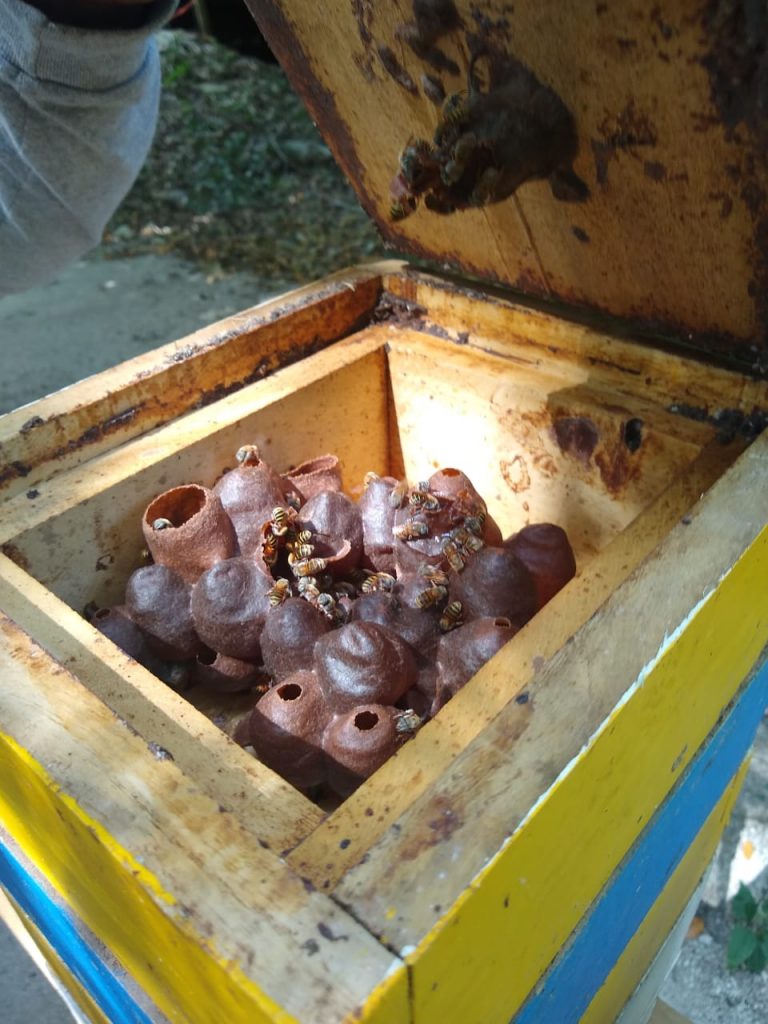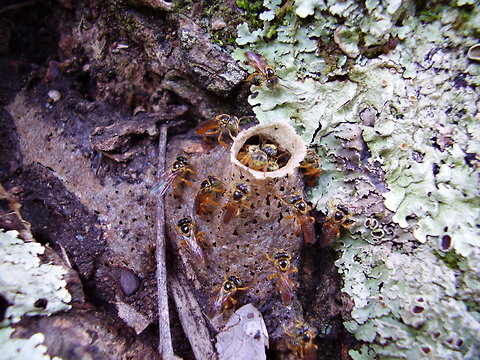Mexico has 47 species of bee and 16 are found only in tropical areas. After the recent introduction of foreign species, many beekeepers began to favor European or African bees because they produced larger quantities of honey.
Increasingly, the Mayan beekeeping tradition has been in serious danger of dying out. Worse yet, populations of stingless bees have declined with deforestation while beekeepers less frequently pass on the tradition to younger generations as they move to cities.
Environmental threat
Apart from the loss of cultural heritage and medicinal honey, this poses a severe environmental threat. Critically, the Melipona bee is the only species capable of pollinating certain plants and fauna.

Their nests consist of small “honey pots” instead of the honeybee’s regular combs. And as their name implies, they lack stingers and are generally less aggressive than honeybees, making them easier to raise. They’re kept as “pets” in many places and can often be tended to by children.
Stingless bees are pickier than their European counterparts about what flowers they visit, making them important for keeping certain tropical forests healthy. The Melipona are the main pollinators of many species of flora in the Yucatan. If we lose these bees, we lose the plants. Because many of the plants in this region can only be pollinated by these bees; another species will not do.
To counter this trend, Bonanza Ranch has joined forces with UMA Rancho San Salvador, a company experienced in sustainable development and nature conservation, to protect the plant fauna of the Yucatan. Rancho Bonanza and UMA will work towards the conservation of the melipona species by promoting the setup and construction of new meliponarios, groups who keep meliponas.

Rancho Bonanza`s vast flora located in 160 hectares of conservation forest in Puerto Morelos offers the ideal conditions for stingless bees to thrive. Rancho Bonanza is abundant with dzidzilché a bush with beautiful white flowers which meliponas feed almost exclusively on.
Rancho Bonanza and UMA Rancho San Salvador`s mission is threefold:
1. Promote the sexual reproduction of diverse species of flora, including the mangrove through natural pollination with the use of native bee species.
2. Promote the conservation of these colonies of native bees.
3. Transmit the knowledge acquired to people interested in learning.
Because there are so many different species of stingless, or meloponine, bees, they produce a wide variety of honey. Its taste has been variously described as sweeter than the honeybee’s product, often with a delightful floral aftertaste.
Melipona honey is unique for its flavor, medicinal value, antibiotic properties, nutritional value and cultural significance because of its sacred use in Mayan ceremonies and rituals. Melipona honey is a bit runny and the flavor pleasantly acidic.

Honey´s medicinal properties
The principal medicinal value of honey arises from its antibacterial properties when used as a wound dressing. Numerous reports attest to its antibiotic properties, no surprise to native people worldwide who use it to treat eye infections and wounds. Studies have hinted that it might help deter cancer.

Thanks for another informative blog. The place else could I am getting that type of information written in such a perfect means? I have a project that I’m just now working on, and I have been at the look out for such information.